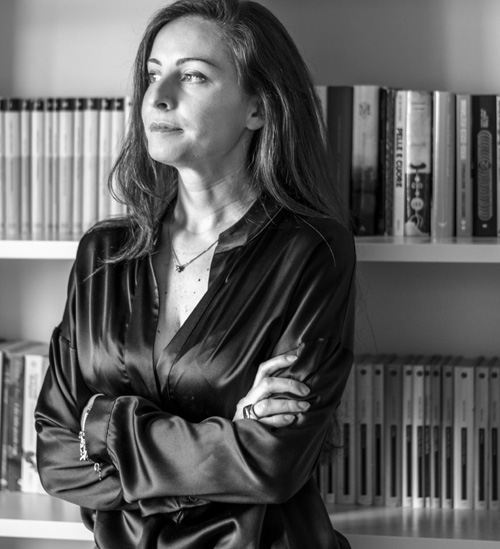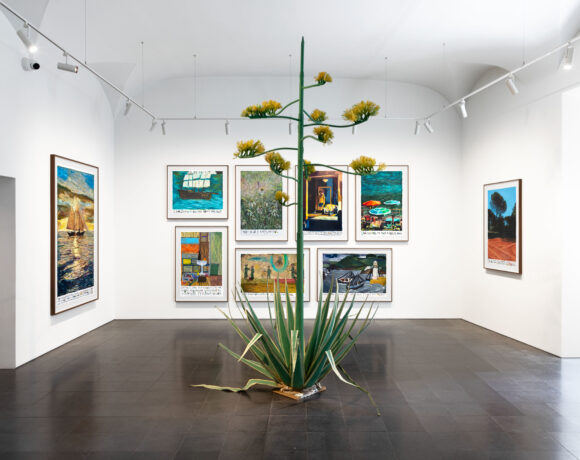According to Bergsonian philosophy, whose theoretical thinking is oriented toward the measurement of instants, there are of two kinds of time: objective and subjective. The former is regularly measured by universal instruments, while the latter, also called duration, is conjoined to the person interpreting it and is related to intuition and memory. Artists generally combine the seemingly unchangeable past with their own vision to freely rethink and reinvent the past into a personal and identity-driven narrative. This is how Xu Bing (Chongqing, China, 1955) moves limitlessly on the line of objective time and duration, embracing the view that all historical ages can become contemporary. Specifically, in the exhibition A Moment in Time: Xu Bing in Rome, conceived for the American Academy in Rome and on view until June 29th, 2024, the artist manipulates the concept of duration through an act of comparison and historical reinterpretation of an archaeological site. In this way, the resulting project stands as clear evidence, reaching the suggestive conclusion that one can be contemporary without losing the thread of history, especially by uniting different aspects, such as the value of time, duration, what remains and the question of the artwork understood as a scenic artifact.

Xu Bing, “The Wall and the Road”, 2024, “A Moment in Time: Xu Bing in Rome”, American Academy in Rome, ph. Credit Daniele Molajoli, courtesy the artist
What is presented at the American Academy is an installation executed with an ancient tracing practice, typical of the Chinese Han dynasty (202 B.C.- 9 A.D., 25- 220 A.D.), on an antique section of the Via Appia dating back to 312 B.C. Through this frottage technique one touches on issues usually related to images and their iconic value, whereby Xu Bing exposes something that is visible elsewhere, bringing it out to us in the form of a majestic veronica[1]. The artist physically brings back the pavement of the ancient Roman street as if he were to transcribe its visual geography. However, although the method he uses borders on the purely mechanical, the artist does not at all neglect the temporal and physical link between the archaeological site and the installation space, to unite different durations: the historical past of a city and its contemporaneity. And it is precisely this dialogical nature that fuels an ambiguity towards the work that should not lead us to consider it as a mimetic reproduction, but rather a captious reverberation of this ideal.

Xu Bing, “The Wall and the Road”, 2024, “A Moment in Time: Xu Bing in Rome”, American Academy in Rome, ph. Credit Daniele Molajoli, courtesy the artist
Moreover, although the American Academy’s installation rooms are small, the works fully and beautifully maintain their scenic arrangement. This makes it possible to put the real context in the background, to experience in the semi-dark rooms an evocative a monumental landscape. Except that from the chromatic monotony of the frottage technique, with its light and rhythmic touch, one can clearly recognize the outline of the crushed grasses, the silhouettes of the bricks of the Via Appia, as a faithful reconstruction to scale of ancient spaces in contemporary times. Xu Bing, in other words, works by mimesis, that is, by imitation and resemblance toward an architectural field transformed into a total setting that finds development in the discrepancy between the simplicity of the material means used and the strength of the effect of their visual dissolution, thus making the atmosphere vibratile and gaseous.

Xu Bing, “The Wall and the Road”, 2024, “A Moment in Time: Xu Bing in Rome”, American Academy in Rome, ph. Credit Daniele Molajoli, courtesy the artist
Additionally, the artist to depart from the formality of academic techniques and acting by imitation, generates an all-over monumental work, while still activating his own severely critical gaze. Therefore, the intrinsic properties of the materials, such as paper, ink and pins that hold the work together are freely displayed, showing their weight, density, and the technical difficulties of such an articulated work. The work results from a controlled construction through scientific principles, whereby the spatial fractures between the sheets of paper are carefully calibrated to create the correct combination for the reconstruction of the archaeological spaces. It is precisely the raw materials that tell their own story, as the papers, when viewed closely, show the appearance of a reptilian, vaguely cracked epidermis, making us imagine the pleasure at the moment of the deployment of the ancient Chinese technique. Formidable sensations that both the artist and the team of collaborators from the Academy of Fine Arts, the European Institute of Design in Rome, and Hang Seng University, as well as the City University of Hong Kong, certainly felt.

Xu Bing, “The Wall and the Road”, 2024, “A Moment in Time: Xu Bing in Rome”, American Academy in Rome, ph. Credit Daniele Molajoli, courtesy the artist
Considering that such process is not new to the artist, as practiced by Xu Bing since 1988, this time, more than in the interpretive pasts, the modular repetition of the sheets creates a perceptual situation equal to a theater of ambivalence; and so, it is that the position assumed by the viewer in the space is equivalent to the appropriation of a historical and social body. However, the work also brings out the melancholic value of the work, not aimed at spectacularizing the past, but rather directed at tracing the passage of time, reporting all its changes. And the critical interpretation that Xu Bing returns to us is not universal: either because of the design discipline that returns a place according to new coordinates of reference, or because of the heartfelt physical and visual impact by which the viewer freely enters its representation. Thus, instead of the terms “time” and “moment”, referred to in the title of the project, it seems more appropriate to resort to the concept of duration around which Xu Bing moves a singular antinomy, which realizes a model whose scientificity opens to the canons of imperfection.
Maria Vittoria Pinotti
[1] Veronica is the term for the icon depicting the face of Christ. According to Christian tradition, Veronica is the name of the woman who, seeing Jesus carrying the cross and his face smeared with sweat and blood, cleansed it with a linen cloth on which the imprint of Jesus’ face would remain.
Info:
A Moment in Time: Xu Bing in Rome
22/06/2024 – 29/06/2024
American Academy in Rome
Via Angelo Masina 9, 00153 Roma
Opening hours: Thursday to Saturday, 4pm to 7pm
www.aarome.org

Maria Vittoria Pinotti (1986, San Benedetto del Tronto) is an art historian, author, and independent critic. She currently is the coordinator of Claudio Abate’s photographic archive and Manager at Elena Bellantoni’s Studio. From 2016 to 2023 she was the Gallery Manager in a gallery in the historic center of Rome. She has worked with ministerial offices such as the General Secretariat of the Ministry of Culture and the Central State Archive. Currently, she collaborates with cultural sector magazines, focusing on in-depth thematic studies dedicated to modern and contemporary art.






NO COMMENT